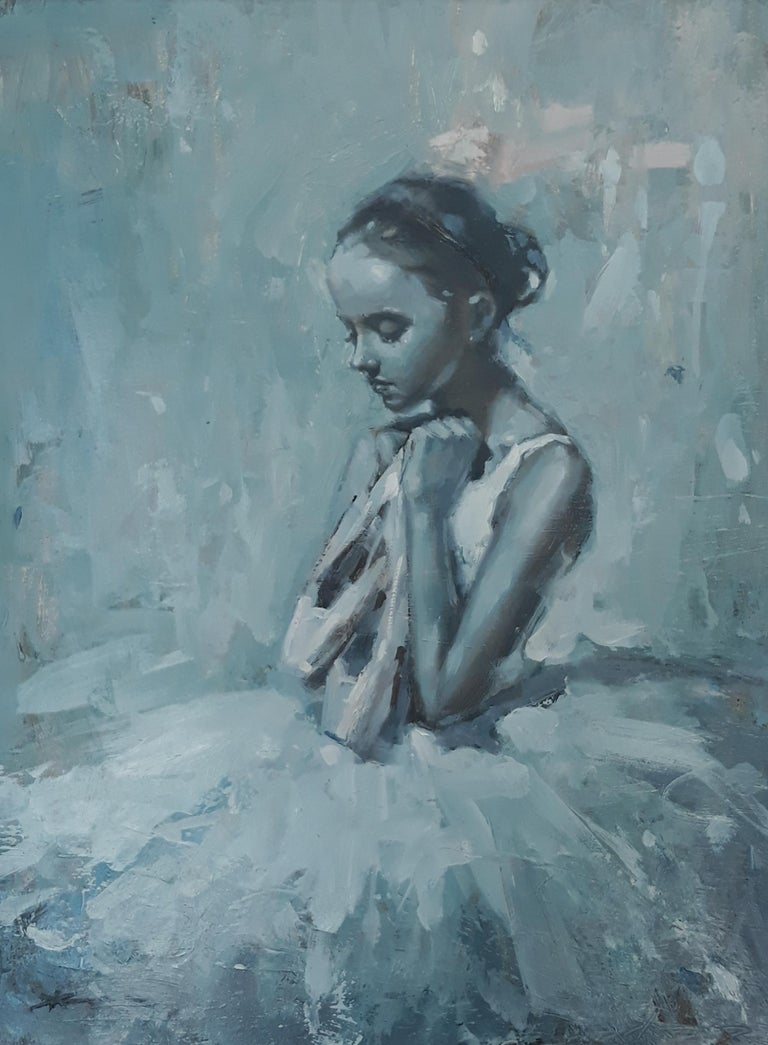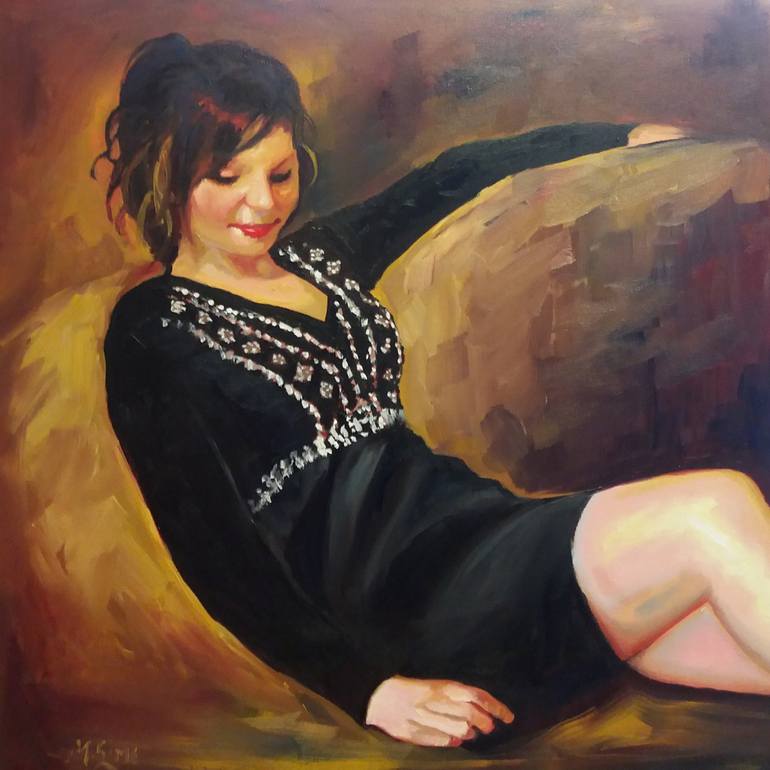The Impact of Figurative Oil Painting on Modern Art and Culture
The Impact of Figurative Oil Painting on Modern Art and Culture
Blog Article
Understanding the Art of Metaphorical Oil Painting: Crucial Tips and Techniques for Aspiring Artists
Figurative oil paint represents an intricate intersection of strategy and interpretation, requiring a complete comprehension of human makeup, composition, and shade theory. An expedition of shade harmony and structure strategies can substantially enhance the visual influence of their work.

Comprehending Human Makeup
Understanding human anatomy is essential for any kind of artist striving to understand figurative oil painting. A thorough grasp of the human kind enables artists to produce lifelike depictions that reverberate with viewers. Knowledge of anatomical structures, such as joints, bones, and muscles, provides vital insight into exactly how the body steps and poses.
Artists should acquaint themselves with the percentages of the human number, consisting of the partnership between different body components and exactly how these proportions differ across genders and ages. This understanding permits precise scaling and perspective in their job. Furthermore, comprehending the underlying musculature enhances the capacity to portray movement and stress in a number, causing a much more vibrant and engaging composition.
Researching composition likewise assists in identifying refined nuances in position and expression, which are essential for conveying feeling and story within a painting. Resources such as physiological books, life drawing sessions, and online tutorials can be indispensable tools for artists seeking to grow their anatomical understanding. Eventually, understanding human anatomy not just enhances technical skill yet likewise enhances a musician's imaginative vision, enabling them to bring their metaphorical oil paintings to life with credibility and deepness.
Significance of Composition

Key principles of make-up consist of equilibrium, unity, and centerpieces. Attaining balance guarantees that no single aspect bewilders the others, while unity creates a feeling of harmony throughout the piece. Prime focus draw focus to considerable elements of the art work, allowing visitors to engage with the story or motif much more deeply.
Additionally, using leading lines and the regulation of thirds can dramatically enhance make-up. Leading lines normally lead the visitor's stare via the paint, while the policy of thirds supplies a framework for putting crucial elements in a visually appealing manner. By mastering composition, aiming musicians can raise their metaphorical oil paintings, transforming them into compelling aesthetic tales that reverberate with their target market.
Learning Shade Theory
Color theory functions as a basic facet of metaphorical oil painting that complements the principles of make-up. Recognizing the shade wheel, that includes main, additional, and tertiary shades, is important for producing unified palettes and effective visual stories.
Secret ideas such as saturation, hue, and worth play a critical duty in establishing the state of mind and effect of a painting. Musicians must explore amazing and warm shades to evoke details feelings; warm shades typically convey power and passion, while trendy colors can convey peace and tranquility.
The partnership in between complementary colors-- those opposite each other on the shade wheel-- can develop striking contrasts and dynamic make-ups. When compared, these shades improve each various other's vibrancy, drawing the customer's eye and including depth to the artwork.
Moreover, recognizing analogous shades permits artists to attain official statement a sense of unity and coherence. By picking shades that are surrounding on the wheel, one can maintain a balanced ambience throughout the item.
Ultimately, grasping shade theory outfits aspiring musicians with the tools needed to adjust color purposefully, enhancing their capacity to convey emotion and story through figurative oil paint. figurative oil painting.
Strategies for Texture
A selection of strategies can efficiently produce appearance in figurative oil painting, adding deepness and measurement to the art work. One essential strategy is the use of impasto, where thick layers of paint are used to the canvas, enabling a three-dimensional quality. This method boosts light interaction, producing vibrant aesthetic passion.
Another technique is scumbling, which includes using a slim layer of lighter paint over a dried darker layer. This method allows the underlying shade to reveal via, causing a soft, distinctive result that can stimulate a feeling of ambience or advice age. Dry brushing is also crucial; using a dry brush with minimal paint, artists can create fragile structures and fine lines, best for capturing the nuances of skin or textile.
Furthermore, combination knives can be utilized to apply or scratch paint, creating special patterns and textures. Trying out various devices and products, such as sponges or dustcloths, can further enhance the textural high quality of a paint. Eventually, grasping these strategies calls for method and testing, allowing musicians to find the diverse responsive qualities that can boost their figurative jobs.
Establishing Your Distinct Design
An artist's unique design is typically the culmination of individual experiences, influences, and strategies developed with time. Establishing this individuality in metaphorical oil painting needs a conscious effort to discover both your inner self and the more comprehensive creative landscape. Begin by mirroring on the styles and topics that resonate with you mentally; your passion will instill authenticity right check it out into your job.
Research various styles and activities, yet instead of mimicing, essence elements that talk to you - figurative oil painting. Explore various techniques, color combinations, and make-ups, permitting on your own the freedom to play without the pressure of perfection. Maintain a sketchbook or journal to record your ideas, concepts, and imaginative progress; this will work as a useful source for recognizing recurring preferences and themes
Seek useful responses from advisors or peers, as they can provide insights that light up elements of your job you might overlook. Attend exhibits and workshops, submersing on your own in the art area to further fine-tune your perspective. Be client with yourself; the trip of creating an one-of-a-kind design is recurring, progressing with each brushstroke and every canvas you experience. Embrace the procedure as long as the result, and your distinctive voice will arise.

Verdict
Grasping figurative oil painting requires a thorough understanding of human composition, structure, and shade theory. Accepting these fundamental principles will substantially profit aspiring artists on their imaginative journey.
Figurative oil painting stands for a complicated junction of technique and analysis, demanding a detailed understanding of human makeup, make-up, and shade theory. An exploration of color consistency and texture techniques can substantially improve the aesthetic influence of their job. By understanding make-up, striving artists can elevate their metaphorical oil paints, transforming them into engaging aesthetic stories that resonate with their target market.
Experiment with various methods, color schemes, and make-ups, enabling yourself the liberty to play without the stress of perfection.Mastering metaphorical oil paint necessitates a comprehensive understanding of human composition, structure, and shade concept.
Report this page